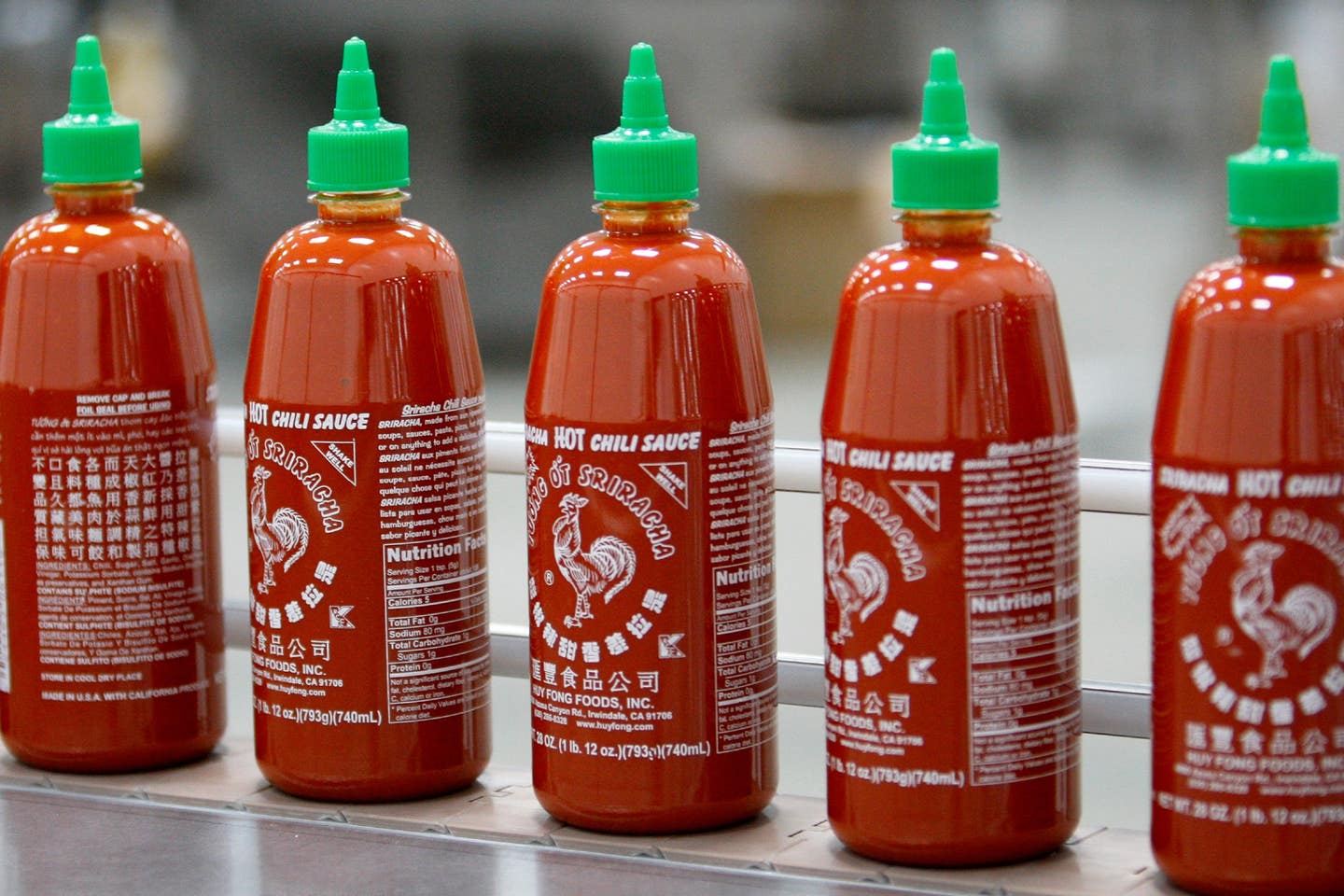
How Chefs Are Handling the Summer Sriracha Shortage
From housemade versions to an “if you know, you know” alternative hot sauce brand.
Condiments may be served on the side, but in reality, they’re the linchpin of a dish—take them away and the whole meal can fall apart.
“Imagine french fries, hotdogs, or burgers without ketchup. Half the population would revolt. Our customers love to add sriracha to our pho, sandwiches, and noodle bowls. It's not the same without it,” said Nhi Mundy, chef-owner of Bà & Me, a small chain of Viet-American restaurants in the Catskills. A severe shortage of chili peppers recently brought production of sriracha by global hot sauce brand Huy Fong Foods to a sputtering standstill—and Mundy and other chefs and restaurateurs around the world risk losing the key condiment for their beloved dishes.
Widespread panic began simmering earlier this week when an April letter from Huy Fong made the rounds online. It blamed the shortage on weather conditions, and said orders of Chili Garlic, Sambal Oelek, and Sriracha Hot Chili Sauce were consequently on hold until Labor Day. Twitter was ablaze.
“The hoarding has begun #srirachashortage,” tweeted one user, with a photo of a tumbleweed-empty grocery store shelf. “Bidding starts at $1,000,” tweeted another, with a row of laughing emojis and a photo of a single bottle of sriracha.
For restaurants, especially those specializing in Southeast Asian cuisine, the issue was less of a laughing matter but rather yet another hurdle for their already pandemic-weary businesses. “Guys, we are rationing sriracha at work like it's Purell in 2020,” tweeted one user, a bartender and server at a Japanese restaurant in Washington. “It's so embarrassing to tell people that we don't give it out to customers when it's an [A]sian restaurant.”
Many chefs and restaurant owners are once again finding themselves under pressure to conjure up creative solutions to save their businesses—this time, to replace the spicy kick customers have come to expect.
“I've considered taking the sriracha bottles off my dining room tables entirely and offering them to clients on a request-only basis,” said Mundy. “We haven't gotten to this point yet, but it's my backup plan. Worst-case scenario, I could also make a pretty decent chili oil sauce.”
Restaurants in higher-traffic locations are already needing to improvise. According to Tuan Phung, chef-owner of the Vietnamese bar and eatery Bánh Mì & Bottles in Philadelphia, “We have a couple different [sriracha] vendors. All of them are out of it.” He’s planning on switching to a housemade sauce that he grew up eating in his hometown of Haiphong, Vietnam. “It's a vinegary chili sauce, and actually complements a bowl of pho really well, if not better than sriracha,” said Phung.
Peter Nguyen, chef-owner of Banh Mi Boys, a pair of New Orleans-based restaurants, said sriracha makes a cameo in several of their dishes, such as the Vietnamese Po Boys and the pho wings dressed in honey sriracha sauce. Noticing a growing scarcity of various Asian ingredients, Nguyen had already stocked up his supply. “Fortunately, [the shortage] hasn’t impacted me yet. But I have plans to research other brands,” he said. ”There are many other companies that serve the same kind of product.”
Mundy of Bà & Me wasn’t so sure. “I've tried alternative brands and they are all inferior to David Tran's sriracha recipe,” she said, referring to the food company’s founder. “His is the Heinz Ketchup of chili sauce. It's perfection in a bottle.”
It seems likely that a time will come, before the end of the summer, when chefs may have to bite the bullet and switch brands, or roll up their sleeves and whip up their own.
As far as substitutes go, Ron Capistrano, owner of Manhattan specialty grocery store Southeast, recommends srirachas from the brands Lee Kum Kee and Shark. The latter, said Capistrano, is the “if you know, you know” option.
Chef Christina Arokiasamy, author of The Malaysian Kitchen cookbook and proprietor of a cooking school in Kent, Washington, considers chili sauce the “soul and backbone of Southeast Asian cooking.” She teaches her students how to prepare her recipe for sambal, a chili sauce that includes shallots, garlic, lemon grass, mangoes, vinegar, peanuts, lime juice, and shrimp paste. One of the benefits of a DIY sauce, according to Arokiasamy, is the ability to tweak it to your taste. “From the fresh red jalapeño to a full-blown spicy explosion of Thai bird’s eye chili, sambals can vary in flavor depending on the type of chili used.”
Across the pond, restaurateurs are likewise murmuring about the impending scarcity. In Paris, Nonette Bành Mí & Donuts had already been preparing its own housemade sriracha before the shortage, which was prescient, as the eatery uses the ingredient in almost all of its dishes. The restaurant’s recipe came from Vietnamese chef and co-owner Khánh-Ly Huynh’s mother. According to Huynh, “We use a mix of different chilis, both fresh and flakes, to add different types of spice. We also use apple, which makes it dense because of the pectin in the fruit, and brings some lightness to the sauce—that’s my mother’s secret touch.” She finishes the sriracha by mixing it with a blend of fresh ginger and lemon juice for acidity. Huynh added, “The point is to have a very aromatic and fruity condiment, instead of something too spicy.” The restaurant also makes two versions of sambal in house.
Though they were spared the impact of one shortage, Nonette Bành Mí & Donuts is suffering from another: sunflower oil, due to the Ukraine-Russia conflict. As temperatures soared in Paris this week to record-breaking highs for mid-June, the effects of climate change were acutely felt. For restaurateurs, the future will likely see even more improvising alternatives to staple ingredients in the kitchen.
For more sriracha varieties to try, check out our round-up of the best ones.
Keep Reading
Continue to Next Story










